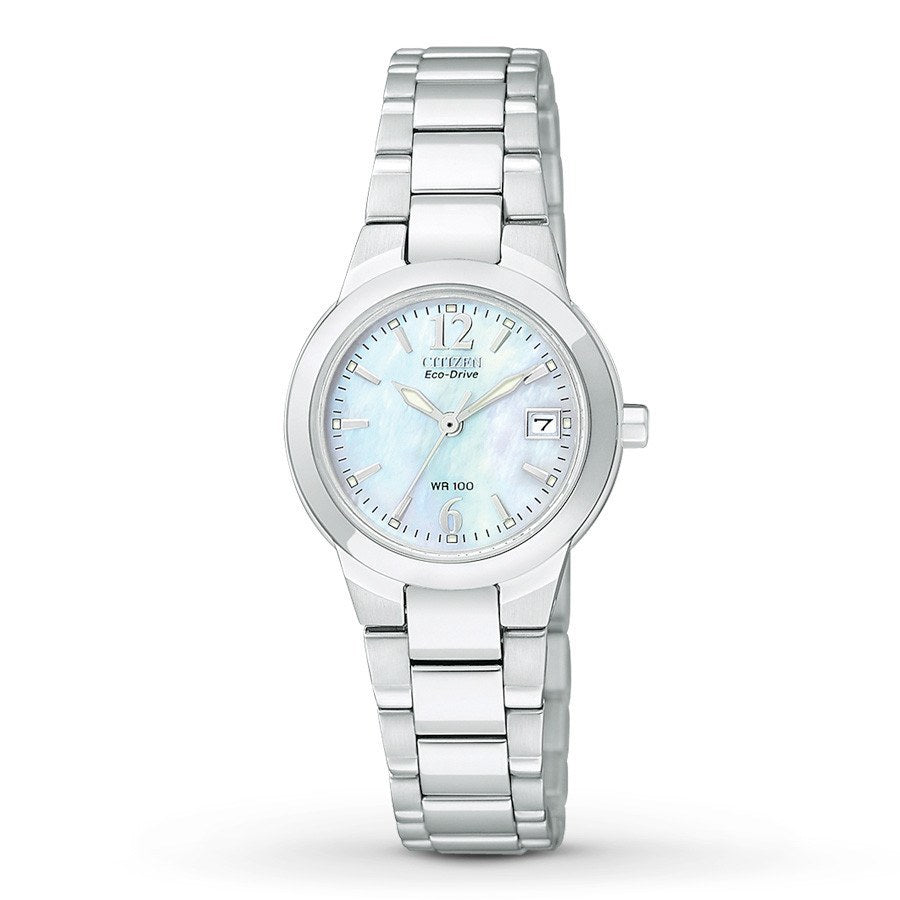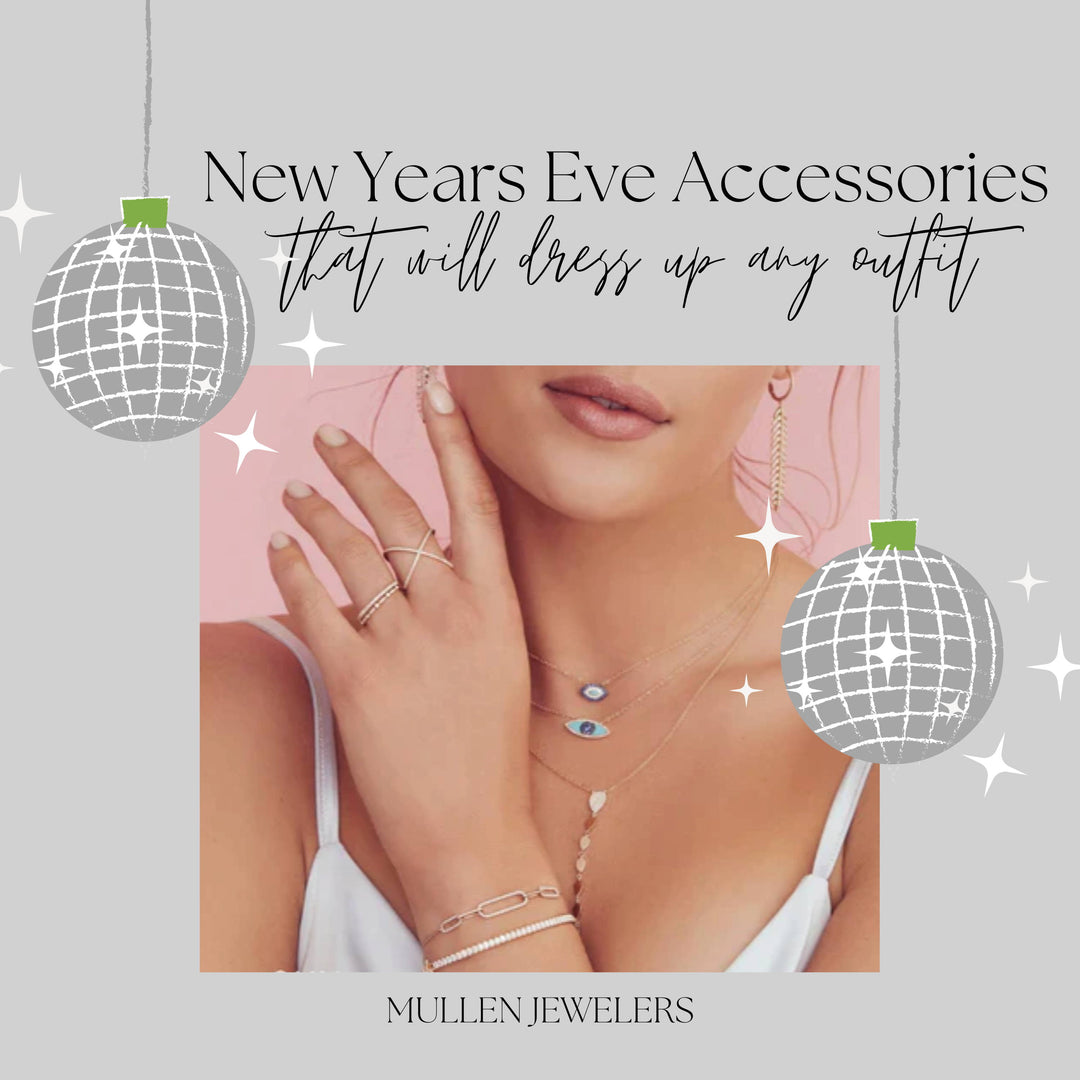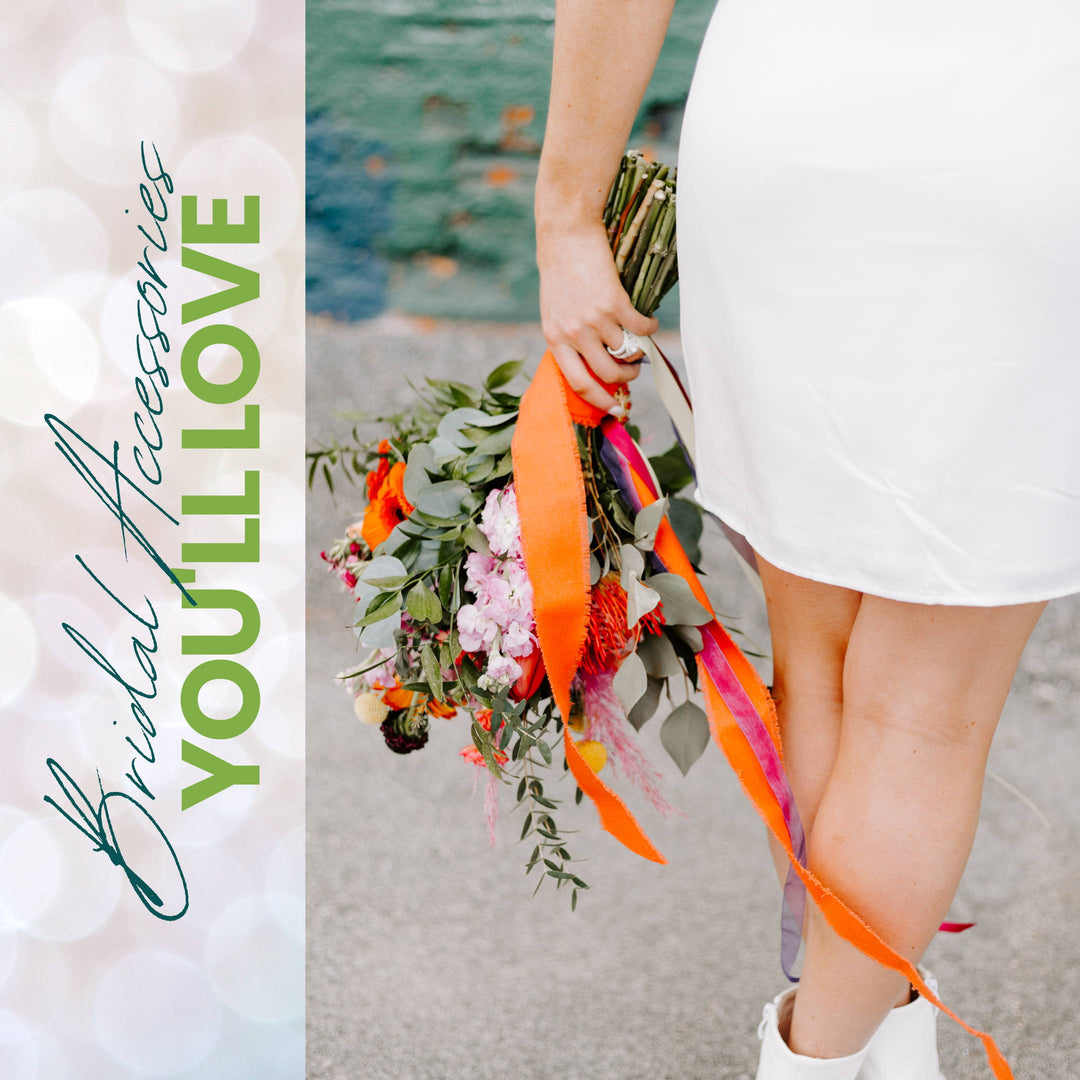Jewelry Guide: Which Metal is Right for You?

Silver, gold, platinum, titanium, tungsten...
There are a LOT of metal options available today for jewelry, so it can get a little confusing to figure out which metal is right for you and your lifestyle. Armed with a little bit of guidance and knowledge, you can confidently choose that next piece of jewelry. Here are some things to consider the next time you go jewelry shopping.
Style Preference
Oftentimes people choose a metal type based on what it looks like, and that's perfectly fine. Some individuals prefer the warmer tones of gold and rose gold, so they opt for those. Others are drawn to cooler hues and silver-toned jewelry, so platinum and white gold top their list. Either way, it is important to love the look of the metal and enjoy what you're wearing.
However, I also believe it's important to know the costs and durability of those metals. Every year jewelry designers are creating new and unique metal options for jewelry like cobalt chrome, zirconium, damascus steel, mokume gane, ceramic, the list goes on. Here's a run-down on some popular metal options you'll see, if you have questions about a different metal, feel free to shoot me an email.
Metal Durability and Costs
Platinum
Platinum is a naturally white metal with a cool luster. Platinum is five times as rare as gold which makes it a pricier option. Since it is extremely dense and significantly heavier than gold or silver, it has a remarkably high level of durability. Platinum doesn't wear or tarnish like other metals, which is a very appealing feature, and it's not susceptible to problems like stress-cracking or corrosion like white gold is. While platinum is scratch-resistant, it’s not scratch proof. (The scratches can be buffed out though.) Although platinum costs more, it requires less maintenance over time.
Gold
Gold remains a popular choice for jewelry and is very versatile. Gold is measured using karats, which describes the purity of gold. Pure gold is 24 karats, meaning 24 out of 24 parts are gold.
Gold most often comes in 18K (75% gold), 14K (58% gold) and 10K (about 42% gold). Since pure gold, 24K, is too soft to be used for jewelry, the remaining percent is made up of other metals — like silver, copper, nickel and zinc— which gives gold its strength, durability, and hue. Price is dependent on purity and gold can come in a variety of colors such as...
Yellow Gold: Yellow gold will remain a classic choice for those that gravitate toward the warm color tones. Yellow gold can show scratches and other abrasions, but repairs and maintenance are easy.
White Gold: White gold gets its look from mixing yellow gold with at least one white metal, e.g. silver, palladium, nickel, etc. White gold is plated with rhodium, a naturally white metal in the platinum family, which helps it resist scratches and tarnishing, and gives it a beautiful pure white, reflective appearance. However, rhodium will wear away over time and require re-plating. Typically rhodium plating will last 2-5 years depending on how much wear the piece receives. The plating on necklaces and earrings will last significantly long than rings or bracelets. Rhodium plating is a very simple process only costs $40.
Rose Gold: Rose gold has seen a surge in popularity lately. Its warm, pink hue is created by combining yellow gold with a copper alloy. Rose gold is durable thanks to the strength of copper, but could pose a problem for someone allergic to copper. Rose gold can be polished just like yellow gold, and does not require any plating.
Sterling Silver
Sterling silver is the whitest of all metals and is often a good choice because it is less expensive than gold. Since 100% silver is too soft for most jewelry, it is a mixture of 92.5% silver and 7.5% metal alloy. Rhodium plating is frequently added to silver to enhance its beauty and protect it from tarnishing. With rhodium plating and diligent, consistent care, sterling silver jewelry can maintain a polished, reflective look for many years. It's important to remember that sterling silver jewelry, because of it's softness, is not nearly as durable as gold or platinum. Therefore we don't recommend it for engagement rings, wedding bands, or other types of jewelry you'd expect to wear daily for decades to come.
Titanium
Lightweight and strong, titanium is a smokey gray-hued metal that is highly resistant to corrosion and scratching. If you work around water, titanium is the metal for you and it's 100% hypoallergenic. Despite it's strength, titanium is extremely lightweight. One thing to keep in mind though: Titanium, and all other alternative metals are impossible to resize. While titanium is a less expensive metal choice, its price can be driven up by the cost of labor to make it into jewelry.
Tungsten

Explore more
- 3 Diamond Jewelry Pieces Every Woman Needs
- Alison Kauffman Jewelry
- all about diamond shapes
- all about diamond color
- all about diamond cuts
- all about earrings
- all about earrings types of earrings
- all about fancy shaped diamonds
- all about fancy shaped diamonds all about fancy cut diamonds
- All About Prong Ring Settings
- Alternative Engagement Rings
- anniversary bands
- anniversary gifts
- April birthstone Jewelry
- Are Cocktail Rings the same as Statement Rings?
- asscher cut diamonds
- bangles
- basic jewelry care
- basic jewelry guide
- basic jewelry pieces every woman must have
- basic jewelry wardrobe
- best gifts for your bridesmaids
- bezel setting
- Birthstone Amethyst Jewelry
- birthstone jewelry
- Blue Topaz
- blue topaz birthstone jewelry
- blue topaz jewelry
- bracelets
- Bridesmaid's gifts
- bright bold jewelry
- brilliant cut diamonds
- Bypass style engagement rings
- Carla Corporation
- Carla Corporation Jewelry
- channel setting
- charms
- christmas gifts for him
- Christmas Jewelry Gifts for her
- Citizen Watches
- citrine birthstone facts
- citrine birthstone jewelry
- citrine jewelry
- cluster diamond engagement rings
- cluster setting
- Cocktail Rings
- Cushion Cut Diamond Engagement Rings
- Cushion Cut Diamond Rings
- Cushion Cut Diamonds
- custom made wedding bands
- custom wedding bands
- definition of a carat
- diamond clarity
- Diamond cocktail rings
- diamond color
- diamond cut
- Diamond earrings
- Diamond Education
- diamond engagement ring settings
- diamond engagement rings
- diamond engagement rings under $3000
- diamond engagement rings with side stones
- diamond halo engagement rings
- diamond jewelry
- Diamond necklaces
- diamond solitaire engagement ring
- difference between a gypsy and bezel setting
- difference between carat and karat
- difference between diamond shape and diamond cut
- difference between fancy shape and fancy cut diamonds
- different types of promise rings
- Drop Earrings
- earring backs
- Earrings at the 2018 Emmy's
- easy valentine's jewelry gifts
- edgy pearls
- edwardian engagement rings
- edwardian wedding sets
- Emerald Cut Diamond Engagement Rings
- emerald cut diamonds
- emerald jewelry
- engagement
- Engagement Ring Education
- engagement ring question you may be embarrassed to ask
- Engagement Ring Questions
- Engagement Ring Terminology
- Engagement Ring Terms
- Engagement Ring Trends 2017
- engagement rings
- engagement rings under $3000
- fall themed jewelry
- fancy cut diamond engagement rings
- fancy cut diamonds
- fancy shaped diamond engagement rings
- fancy shaped diamonds
- Fashion Jewelry News
- February Birthstone Amethyst
- finding the perfect anniversary gift
- flush mount setting
- Frederick Goldman
- Frederick Goldman Jewelry
- Gabriel & Co. New York
- Gabriel & Co. New York Engagement Rings
- Gabriel & Co. New York Fashion Jewelry
- Gabriel and Company New York
- Garnet Birthstone Jewelry
- geometric jewelry
- Get the 2019 Oscar Jewelry Look
- Get the Perfect Engagement Ring Selfie
- getting the perfect surprise proposal picture
- GIA Diamond Color Scale
- gift ideas for mom
- golden globes 2018
- golden globes hot jewelry looks 2017
- Golden Globes Top Jewelry Moments
- green colored jewelry
- gypsy setting
- halo ring setting
- hiding your engagement ring before popping the question
- History of Movado
- Holiday Gift Guides
- holiday gifts for him
- holiday gifts under $300
- Holiday jewelry for under $200
- holiday jewelry trends 2016
- Hot Jewelry for Summer
- how to achieve the layered necklace look
- how to figure out your girlfriend's engagement ring size
- how to figure out your girlfriend's ring size
- how to get a diamond engagement ring on a budget
- How to Get the Perfect Engagement Ring Photo
- how to get the perfect surprise proposal picture
- how to layer necklaces
- how to pick an oval diamond engagement ring
- how to pick the right watch
- How to save for your engagement ring
- how to store your jewelry
- how to take care of your jewelry
- how to travel with jewelry
- Including Pets in Your Wedding Proposal
- invisible setting
- is a diamond's color important
- January birthstone
- January Birthstone Garnet
- Jewelry Education
- jewelry every woman must have
- jewelry for valentine's day
- Jewelry Gift Guides
- Jewelry Gift Ideas
- Jewelry Ideas for Mom
- jewelry ideas for mother's day
- jewelry trends 2016
- jewelry trends 2017
- jewelry trends for 2018
- Jewelry under $1000
- jewelry under $500
- jewelry wardrobe
- John Medeiros Jewelry Collection
- July Birthstone Jewelry
- July birthstone Ruby
- July Birthstone Ruby Jewelry
- june birthstone alexandrite
- June birthstone Moonstone
- June birthstone pearl
- Kendra Scott
- Kendra Scott Jewelry
- kinds of promise rings
- Lady Gaga's Engagement Ring
- lafonn jewelry
- last minute christmas gift ideas
- last minute gift ideas
- last minute holiday gift ideas
- layered look
- layering necklaces
- London Blue Topaz
- March birthstone aquamarine
- march birthstone jewelry
- May Birthstone Emerald
- men's watches
- men's wedding bands
- Merry Christmas 2015
- Michael Kors Watches
- Mismatched Earrings
- morganite
- morganite engagement rings
- morganite jewelry
- morganite rings
- Mother's Day Gift Ideas
- mother's day gifts
- Mother's Day Jewelry Gift Ideas
- Movado
- Movado Watches
- Non-Traditional Engagement Rings
- October Birthstone Jewelry
- October Birthstone Opal
- October Birthstone Tourmaline
- orange and gold jewelry
- oval cut diamonds
- oval diamond engagement rings
- oval diamonds
- Paris Hilton Lost Her Engagement Ring
- Paris Hilton's Diamond Engagement Ring
- Pear Shaped Diamond Engagement Ring
- pear shaped diamonds
- pear shaped jewelry
- pearls
- perfect jewelry gifts for mother's day
- perfect surprise proposal pictures
- peridot
- peridot birthstone jewelry
- peridot facts
- pets and your proposal
- picking the perfect anniversary gifts
- picking the right watch
- Pippa Middleton's engagement ring
- Pippa Middleton's wedding rings
- popular styles of promise rings
- Princess cut diamond
- princess cut diamond engagement ring
- princess cut engagement ring
- promise ring
- promise rings
- prong setting
- prong setting jewelry
- pros and cons of a prong setting
- rhythm of love jewelry
- rose gold
- Rose Gold Diamond Engagement Rings for 2018
- rose gold jewelry
- round cut diamonds
- round diamond engagement rings
- round diamonds
- round shape diamonds
- sapphire
- sapphire birthstone jewelry
- Sapphire Diamond Engagement Rings for 2018
- sapphire earrings
- sapphire jewelry
- sapphire necklaces
- sapphire rings
- secrets to layering necklaces
- smart ways to get a bigger engagement ring
- smart ways to save for your engagement ring
- sneaky ways to figure out her ring size
- solitaire diamond
- solitaire diamond engagement ring
- solitaire engagement ring
- St. Patrick's Day
- stacked enagement ring sets
- stacked engagement rings
- stacked rings
- stacked wedding ring sets
- stacked wedding rings
- Statement Necklaces
- statement rings
- summer jewelry
- Summer Jewelry Looks
- Swiss Blue Topaz
- The Best Jewelry at the 2019 SAG Awards
- the best way to wear a watch
- The History of the Cocktail Ring
- Ti Sento - Milano
- Ti Sento - Milano Jewelry
- tips for layering necklackes
- top 10 valentine's day heart jewelry gift ideas
- top jewelry trends 2017
- Two Tone Gold Jewelry
- two-tone jewelry
- twogether jewelry
- types of earrings
- understanding ring setting techniques
- Unique ways to hide your engagement ring
- unique wedding bands
- Upgrading Your Engagement Ring
- v-prong setting
- Valentine's Day Gift Ideas
- valentine's day heart jewelry
- valentine's day jewelry
- Valentine's Day Jewelry Gift Ideas
- valentine's jewelry
- valentine's jewelry for her
- Video Music Awards 2018
- vintage diamond engagement rings
- Vintage Diamond Engagement Rings for 2018
- vintage inspired engagement rings
- watche styles to suit every man
- watches for every man
- watches for him
- wearing watches with style
- wedding band weekend
- wedding bands
- wedding bands for men
- What Do You Do If You Lost Your Diamond Engagement Ring
- what is a carat
- what is a promise rings
- what is morganite
- what is rose gold
- White and Gold Jewelry
- whitehouse brothers
- Why Wear a Watch
Share this
From the blog
View all- 3 Diamond Jewelry Pieces Every Woman Needs
- Alison Kauffman Jewelry
- all about diamond shapes
- all about diamond color
- all about diamond cuts
- all about earrings
- all about earrings types of earrings
- all about fancy shaped diamonds
- all about fancy shaped diamonds all about fancy cut diamonds
- All About Prong Ring Settings
- Alternative Engagement Rings
- anniversary bands
- anniversary gifts
- April birthstone Jewelry
- Are Cocktail Rings the same as Statement Rings?
- asscher cut diamonds
- bangles
- basic jewelry care
- basic jewelry guide
- basic jewelry pieces every woman must have
- basic jewelry wardrobe
- best gifts for your bridesmaids
- bezel setting
- Birthstone Amethyst Jewelry
- birthstone jewelry
- Blue Topaz
- blue topaz birthstone jewelry
- blue topaz jewelry
- bracelets
- Bridesmaid's gifts
- bright bold jewelry
- brilliant cut diamonds
- Bypass style engagement rings
- Carla Corporation
- Carla Corporation Jewelry
- channel setting
- charms
- christmas gifts for him
- Christmas Jewelry Gifts for her
- Citizen Watches
- citrine birthstone facts
- citrine birthstone jewelry
- citrine jewelry
- cluster diamond engagement rings
- cluster setting
- Cocktail Rings
- Cushion Cut Diamond Engagement Rings
- Cushion Cut Diamond Rings
- Cushion Cut Diamonds
- custom made wedding bands
- custom wedding bands
- definition of a carat
- diamond clarity
- Diamond cocktail rings
- diamond color
- diamond cut
- Diamond earrings
- Diamond Education
- diamond engagement ring settings
- diamond engagement rings
- diamond engagement rings under $3000
- diamond engagement rings with side stones
- diamond halo engagement rings
- diamond jewelry
- Diamond necklaces
- diamond solitaire engagement ring
- difference between a gypsy and bezel setting
- difference between carat and karat
- difference between diamond shape and diamond cut
- difference between fancy shape and fancy cut diamonds
- different types of promise rings
- Drop Earrings
- earring backs
- Earrings at the 2018 Emmy's
- easy valentine's jewelry gifts
- edgy pearls
- edwardian engagement rings
- edwardian wedding sets
- Emerald Cut Diamond Engagement Rings
- emerald cut diamonds
- emerald jewelry
- engagement
- Engagement Ring Education
- engagement ring question you may be embarrassed to ask
- Engagement Ring Questions
- Engagement Ring Terminology
- Engagement Ring Terms
- Engagement Ring Trends 2017
- engagement rings
- engagement rings under $3000
- fall themed jewelry
- fancy cut diamond engagement rings
- fancy cut diamonds
- fancy shaped diamond engagement rings
- fancy shaped diamonds
- Fashion Jewelry News
- February Birthstone Amethyst
- finding the perfect anniversary gift
- flush mount setting
- Frederick Goldman
- Frederick Goldman Jewelry
- Gabriel & Co. New York
- Gabriel & Co. New York Engagement Rings
- Gabriel & Co. New York Fashion Jewelry
- Gabriel and Company New York
- Garnet Birthstone Jewelry
- geometric jewelry
- Get the 2019 Oscar Jewelry Look
- Get the Perfect Engagement Ring Selfie
- getting the perfect surprise proposal picture
- GIA Diamond Color Scale
- gift ideas for mom
- golden globes 2018
- golden globes hot jewelry looks 2017
- Golden Globes Top Jewelry Moments
- green colored jewelry
- gypsy setting
- halo ring setting
- hiding your engagement ring before popping the question
- History of Movado
- Holiday Gift Guides
- holiday gifts for him
- holiday gifts under $300
- Holiday jewelry for under $200
- holiday jewelry trends 2016
- Hot Jewelry for Summer
- how to achieve the layered necklace look
- how to figure out your girlfriend's engagement ring size
- how to figure out your girlfriend's ring size
- how to get a diamond engagement ring on a budget
- How to Get the Perfect Engagement Ring Photo
- how to get the perfect surprise proposal picture
- how to layer necklaces
- how to pick an oval diamond engagement ring
- how to pick the right watch
- How to save for your engagement ring
- how to store your jewelry
- how to take care of your jewelry
- how to travel with jewelry
- Including Pets in Your Wedding Proposal
- invisible setting
- is a diamond's color important
- January birthstone
- January Birthstone Garnet
- Jewelry Education
- jewelry every woman must have
- jewelry for valentine's day
- Jewelry Gift Guides
- Jewelry Gift Ideas
- Jewelry Ideas for Mom
- jewelry ideas for mother's day
- jewelry trends 2016
- jewelry trends 2017
- jewelry trends for 2018
- Jewelry under $1000
- jewelry under $500
- jewelry wardrobe
- John Medeiros Jewelry Collection
- July Birthstone Jewelry
- July birthstone Ruby
- July Birthstone Ruby Jewelry
- june birthstone alexandrite
- June birthstone Moonstone
- June birthstone pearl
- Kendra Scott
- Kendra Scott Jewelry
- kinds of promise rings
- Lady Gaga's Engagement Ring
- lafonn jewelry
- last minute christmas gift ideas
- last minute gift ideas
- last minute holiday gift ideas
- layered look
- layering necklaces
- London Blue Topaz
- March birthstone aquamarine
- march birthstone jewelry
- May Birthstone Emerald
- men's watches
- men's wedding bands
- Merry Christmas 2015
- Michael Kors Watches
- Mismatched Earrings
- morganite
- morganite engagement rings
- morganite jewelry
- morganite rings
- Mother's Day Gift Ideas
- mother's day gifts
- Mother's Day Jewelry Gift Ideas
- Movado
- Movado Watches
- Non-Traditional Engagement Rings
- October Birthstone Jewelry
- October Birthstone Opal
- October Birthstone Tourmaline
- orange and gold jewelry
- oval cut diamonds
- oval diamond engagement rings
- oval diamonds
- Paris Hilton Lost Her Engagement Ring
- Paris Hilton's Diamond Engagement Ring
- Pear Shaped Diamond Engagement Ring
- pear shaped diamonds
- pear shaped jewelry
- pearls
- perfect jewelry gifts for mother's day
- perfect surprise proposal pictures
- peridot
- peridot birthstone jewelry
- peridot facts
- pets and your proposal
- picking the perfect anniversary gifts
- picking the right watch
- Pippa Middleton's engagement ring
- Pippa Middleton's wedding rings
- popular styles of promise rings
- Princess cut diamond
- princess cut diamond engagement ring
- princess cut engagement ring
- promise ring
- promise rings
- prong setting
- prong setting jewelry
- pros and cons of a prong setting
- rhythm of love jewelry
- rose gold
- Rose Gold Diamond Engagement Rings for 2018
- rose gold jewelry
- round cut diamonds
- round diamond engagement rings
- round diamonds
- round shape diamonds
- sapphire
- sapphire birthstone jewelry
- Sapphire Diamond Engagement Rings for 2018
- sapphire earrings
- sapphire jewelry
- sapphire necklaces
- sapphire rings
- secrets to layering necklaces
- smart ways to get a bigger engagement ring
- smart ways to save for your engagement ring
- sneaky ways to figure out her ring size
- solitaire diamond
- solitaire diamond engagement ring
- solitaire engagement ring
- St. Patrick's Day
- stacked enagement ring sets
- stacked engagement rings
- stacked rings
- stacked wedding ring sets
- stacked wedding rings
- Statement Necklaces
- statement rings
- summer jewelry
- Summer Jewelry Looks
- Swiss Blue Topaz
- The Best Jewelry at the 2019 SAG Awards
- the best way to wear a watch
- The History of the Cocktail Ring
- Ti Sento - Milano
- Ti Sento - Milano Jewelry
- tips for layering necklackes
- top 10 valentine's day heart jewelry gift ideas
- top jewelry trends 2017
- Two Tone Gold Jewelry
- two-tone jewelry
- twogether jewelry
- types of earrings
- understanding ring setting techniques
- Unique ways to hide your engagement ring
- unique wedding bands
- Upgrading Your Engagement Ring
- v-prong setting
- Valentine's Day Gift Ideas
- valentine's day heart jewelry
- valentine's day jewelry
- Valentine's Day Jewelry Gift Ideas
- valentine's jewelry
- valentine's jewelry for her
- Video Music Awards 2018
- vintage diamond engagement rings
- Vintage Diamond Engagement Rings for 2018
- vintage inspired engagement rings
- watche styles to suit every man
- watches for every man
- watches for him
- wearing watches with style
- wedding band weekend
- wedding bands
- wedding bands for men
- What Do You Do If You Lost Your Diamond Engagement Ring
- what is a carat
- what is a promise rings
- what is morganite
- what is rose gold
- White and Gold Jewelry
- whitehouse brothers
- Why Wear a Watch














Leave a comment